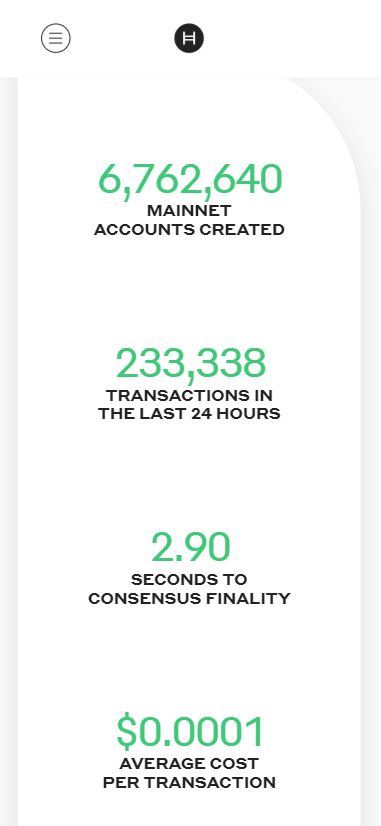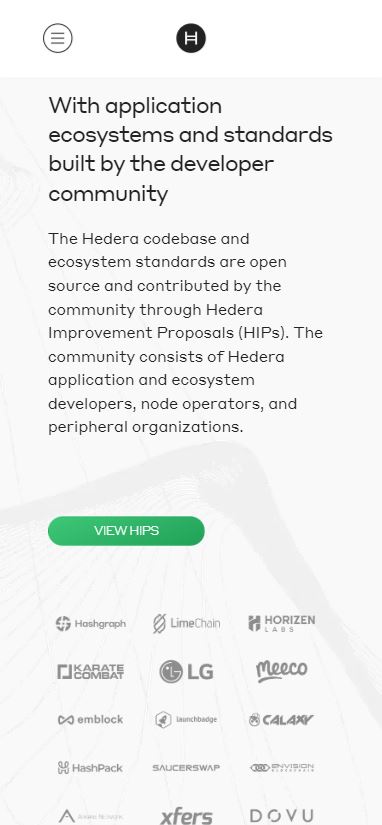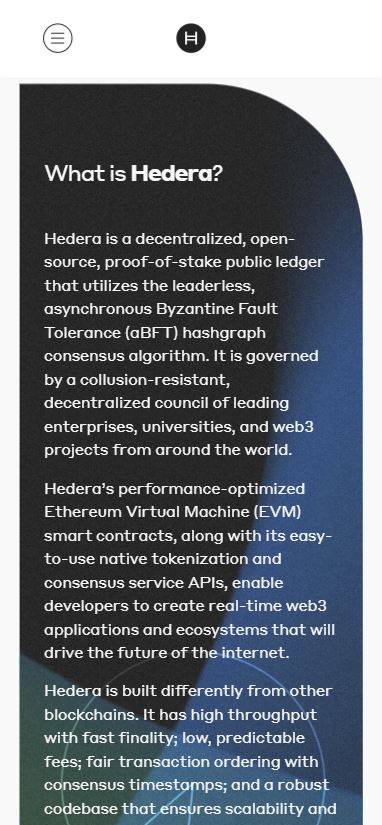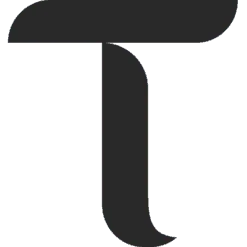About Hedera (HBAR)
Hedera (HBAR) is the native cryptocurrency of the Hedera network, an advanced, enterprise-grade public ledger that uses Hashgraph technology instead of traditional blockchain. Hedera’s fast, secure, and scalable infrastructure supports decentralized applications (DApps), smart contracts, and file storage, offering a range of services for both individuals and businesses. HBAR tokens are used to pay for transaction fees (gas) on the Hedera network, ensuring smooth and efficient operations.
What is Hedera (HBAR)?
Hedera, also known as Hedera Hashgraph, is a decentralized public network designed to solve the issues that often plague traditional blockchain systems, such as slow transaction speeds and network instability. Hedera’s native token, HBAR, is used for several functions within the platform, including paying for transaction fees, executing smart contracts, and supporting the platform’s overall security and integrity. Unlike traditional blockchains, Hedera operates on a Proof-of-Stake (PoS) consensus model, which ensures a more energy-efficient and scalable approach to transaction verification while maintaining a high level of security.
How Does Hedera (HBAR) Work?
Hedera uses a unique consensus algorithm known as Hashgraph, which is a form of distributed ledger technology (DLT). Hashgraph offers a significant improvement in transaction speed, enabling Hedera to process thousands of transactions per second (TPS) with low latency. The protocol is designed to optimize performance for use cases like micropayments, tokenization, and maintaining data integrity.
One of Hedera’s key features is its ability to support smart contracts written in the Solidity programming language, making it compatible with Ethereum-based decentralized applications (DApps). The network also incorporates built-in compliance tools, such as Know Your Customer (KYC) and Anti-Money Laundering (AML) checks, to help meet regulatory requirements. Additionally, Hedera includes a Consensus Service, allowing businesses to build applications that need a trustworthy, verifiable log of events, further enhancing the platform’s security and transparency.
Potential Use Cases for Hedera (HBAR)
Hedera’s high-performance, low-cost platform is suited for a wide variety of use cases, particularly in areas that require fast and secure transactions. Some key applications include:
- Crypto Payments: Hedera’s transaction speed and scalability make it ideal for real-time, large-scale crypto-payment applications.
- Tokenization: Hedera’s Token Service allows users to create and manage digital assets, making it a powerful tool for tokenization projects.
- Smart Contracts and DApps: Developers can build decentralized applications using Hedera’s smart contract functionality, which is compatible with Ethereum’s Solidity language.
- Decentralized File Storage: Hedera offers decentralized file storage services, with features such as proof-of-deletion, controlled mutability, and time-based file expiry, which can be beneficial for applications requiring secure, tamper-proof data storage.
- Event Logging and Auditing: Hedera’s Consensus Service enables businesses to create verifiable logs of events for transparent record-keeping and auditing purposes.
History of Hedera (HBAR)
Hedera was founded by Dr. Leemon Baird and Mance Harmon. Dr. Baird is the inventor of the Hashgraph algorithm, having previously worked in computer science and security. Mance Harmon, the company’s CEO, is an experienced technology executive with a background in IT security.
The project was funded through an Initial Coin Offering (ICO) in August 2018, with the Hedera mainnet becoming publicly accessible in September 2019. The platform’s native utility token, HBAR, was introduced as part of the ICO. Hedera was built with a vision to provide businesses and developers with a faster, more secure, and scalable decentralized network, offering a solution to the limitations faced by traditional blockchain networks.
Can I Mine or Stake Hedera (HBAR)?
Unlike many cryptocurrencies that rely on mining, Hedera does not use a Proof-of-Work (PoW) mechanism. Instead, it operates on a Proof-of-Stake (PoS) model, where network participants stake HBAR tokens to secure the network and validate transactions. Hedera’s staking system is designed to provide both scalability and security while minimizing the environmental impact associated with mining. HBAR holders can participate in staking to earn rewards, but they do not mine the token in the traditional sense.



























Harran –
decentralized Very good